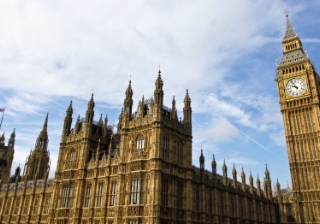Auto enrolment contributions won't be adequate, warns the PPI
The Pensions Policy Institute is today publishing a report that analyses the effect that contribution rates to workplace pensions could have on overall levels of retirement income.

The report has been funded by the Association of British Insurers and the Defined Contribution Investment Forum, and is based on a model developed by the Department of Mathematics, King's College London.
The report finds that if a median earner saves only at the minimum contribution rate of 8% of a band of earnings throughout their working life, they will have a less than fifty-fifty chance of achieving an adequate retirement income.
Chris Curry, PPI Director said:
"The analysis shows that the outcomes from being automatically enrolled into a defined contribution workplace pension are highly uncertain. In general, individuals will need to contribute more than the minimum level at which they are likely to be automatically enrolled to have a good chance of achieving an adequate retirement income."
"For example, a median earner who starts saving at age 22 and contributes continuously until reaching State Pension Age will need a total contribution from employee, employer and Government of 11% of band earnings to have a two in three chance of receiving an adequate retirement income."
"However, there is not a single contribution rate that will mean that everyone will have an adequate retirement income. Lower earners may be able to contribute less than the hypothetical median earner, as a greater proportion of their income is provided by the state. But higher earners, those who opt-out early in their career and individuals with career breaks need to contribute more than the median earner to have a two in three chance of achieving an adequate income in retirement."
Chris Curry added:
"What happens to the single-tier state pension has a significant impact on the chances of achieving an adequate retirement income. If the single-tier pension is increased each year in line with average earnings growth - the minimum level set out in the current Pensions Bill - rather than the "triple lock" of the higher of earnings, prices and 2.5% that the DWP has used in illustrations, the contribution needed by the median earner to have a two in three chance of an adequate retirement income is 14% of band earnings, rather than 11%."
Breaking news
Direct to your inbox:
More
stories
you'll love:
This week's biggest stories:
This week's biggest stories:
MPowered Mortgages
MPowered closes to new business amid potential sale

FCA
FCA bans and fines adviser £100,000

Budget
Reeves lays groundwork for tax rises in surprise pre-Budget speech

Santander
Santander reduces mortgage rates by up to 0.36% and launches new large loans

Pensions
Budget rumours drive 45% spike in pension lump sum enquiries

HSBC
HSBC launches 6.5x income mortgage range
